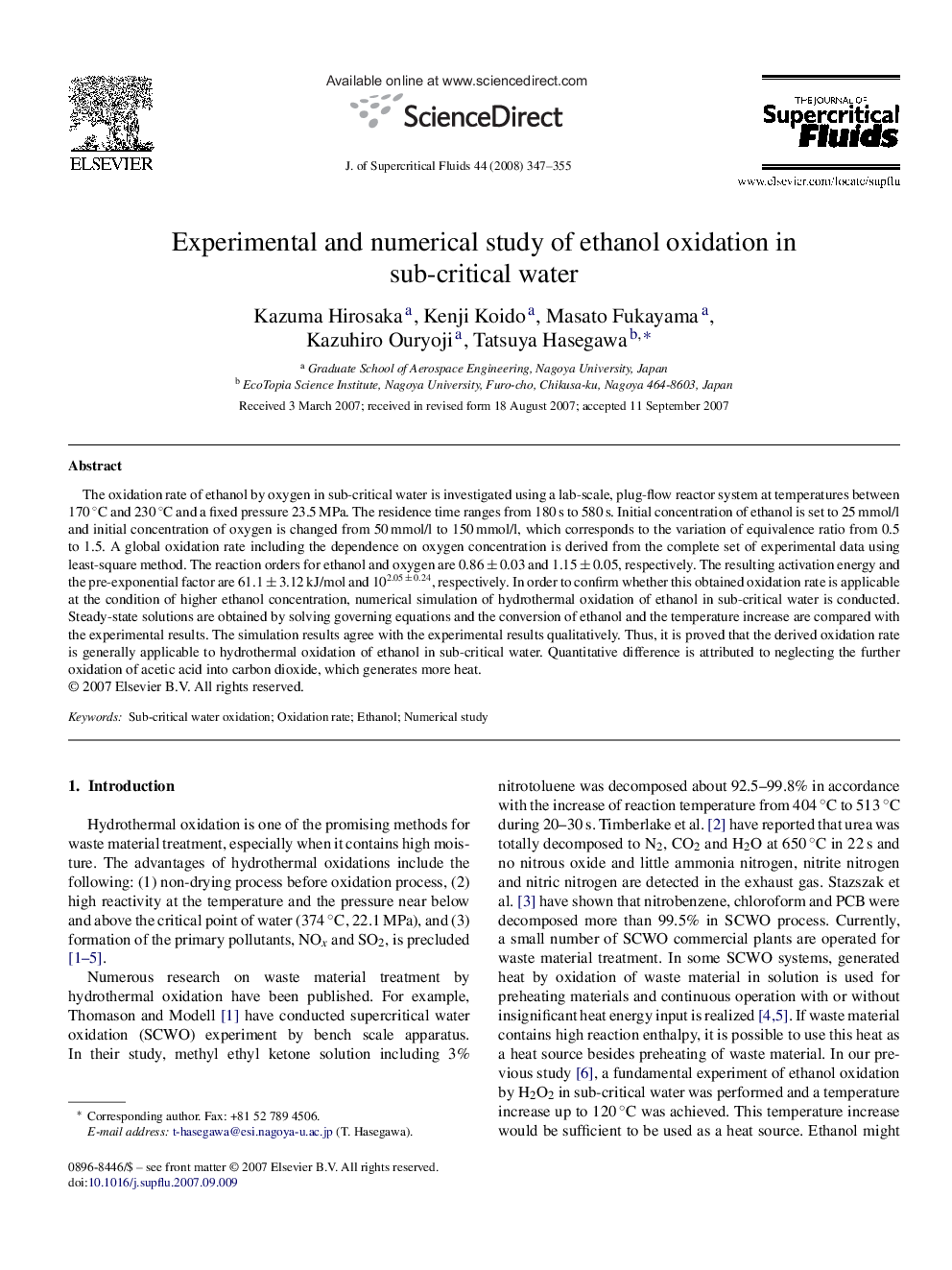| Article ID | Journal | Published Year | Pages | File Type |
|---|---|---|---|---|
| 231920 | The Journal of Supercritical Fluids | 2008 | 9 Pages |
The oxidation rate of ethanol by oxygen in sub-critical water is investigated using a lab-scale, plug-flow reactor system at temperatures between 170 °C and 230 °C and a fixed pressure 23.5 MPa. The residence time ranges from 180 s to 580 s. Initial concentration of ethanol is set to 25 mmol/l and initial concentration of oxygen is changed from 50 mmol/l to 150 mmol/l, which corresponds to the variation of equivalence ratio from 0.5 to 1.5. A global oxidation rate including the dependence on oxygen concentration is derived from the complete set of experimental data using least-square method. The reaction orders for ethanol and oxygen are 0.86 ± 0.03 and 1.15 ± 0.05, respectively. The resulting activation energy and the pre-exponential factor are 61.1 ± 3.12 kJ/mol and 102.05 ± 0.24, respectively. In order to confirm whether this obtained oxidation rate is applicable at the condition of higher ethanol concentration, numerical simulation of hydrothermal oxidation of ethanol in sub-critical water is conducted. Steady-state solutions are obtained by solving governing equations and the conversion of ethanol and the temperature increase are compared with the experimental results. The simulation results agree with the experimental results qualitatively. Thus, it is proved that the derived oxidation rate is generally applicable to hydrothermal oxidation of ethanol in sub-critical water. Quantitative difference is attributed to neglecting the further oxidation of acetic acid into carbon dioxide, which generates more heat.
